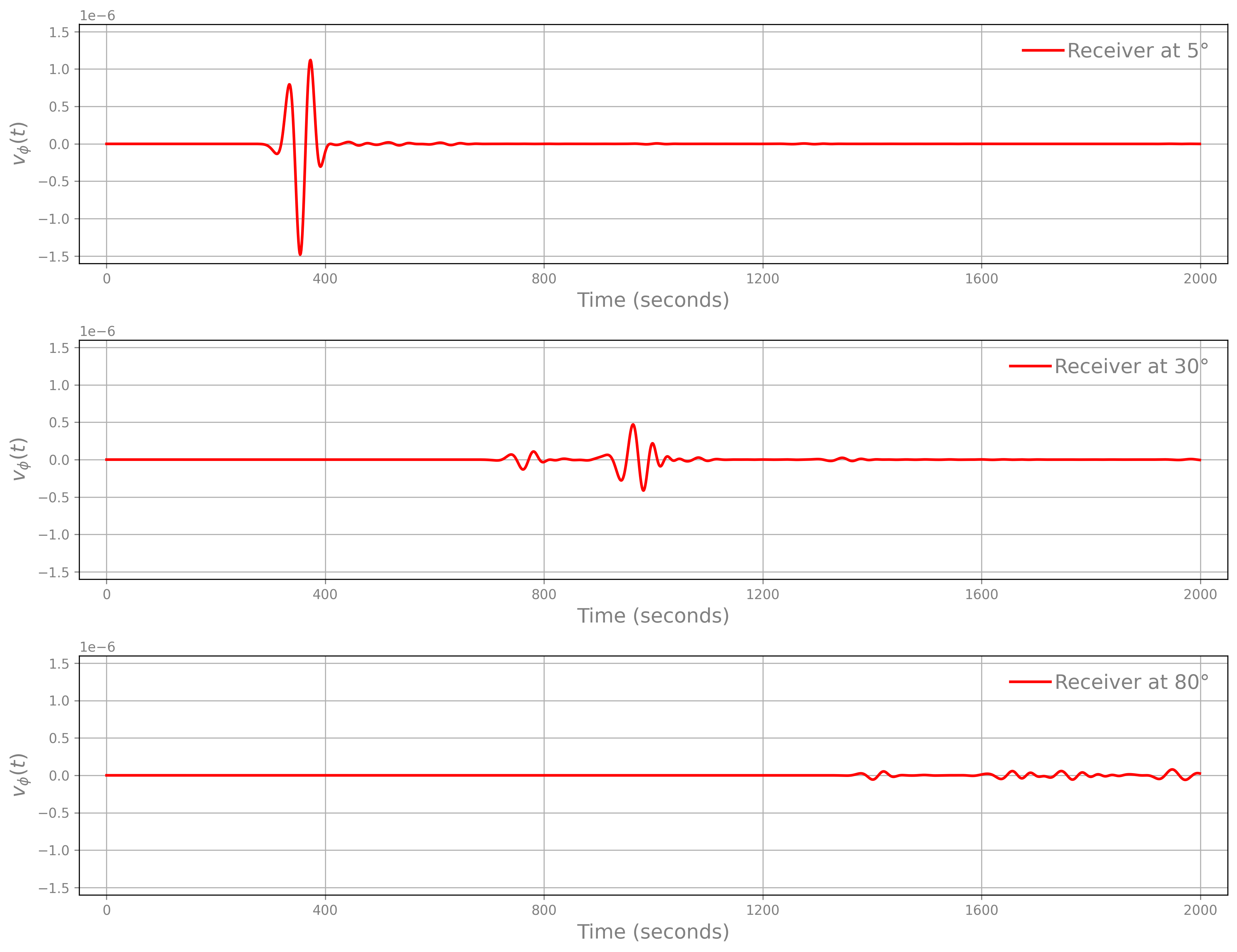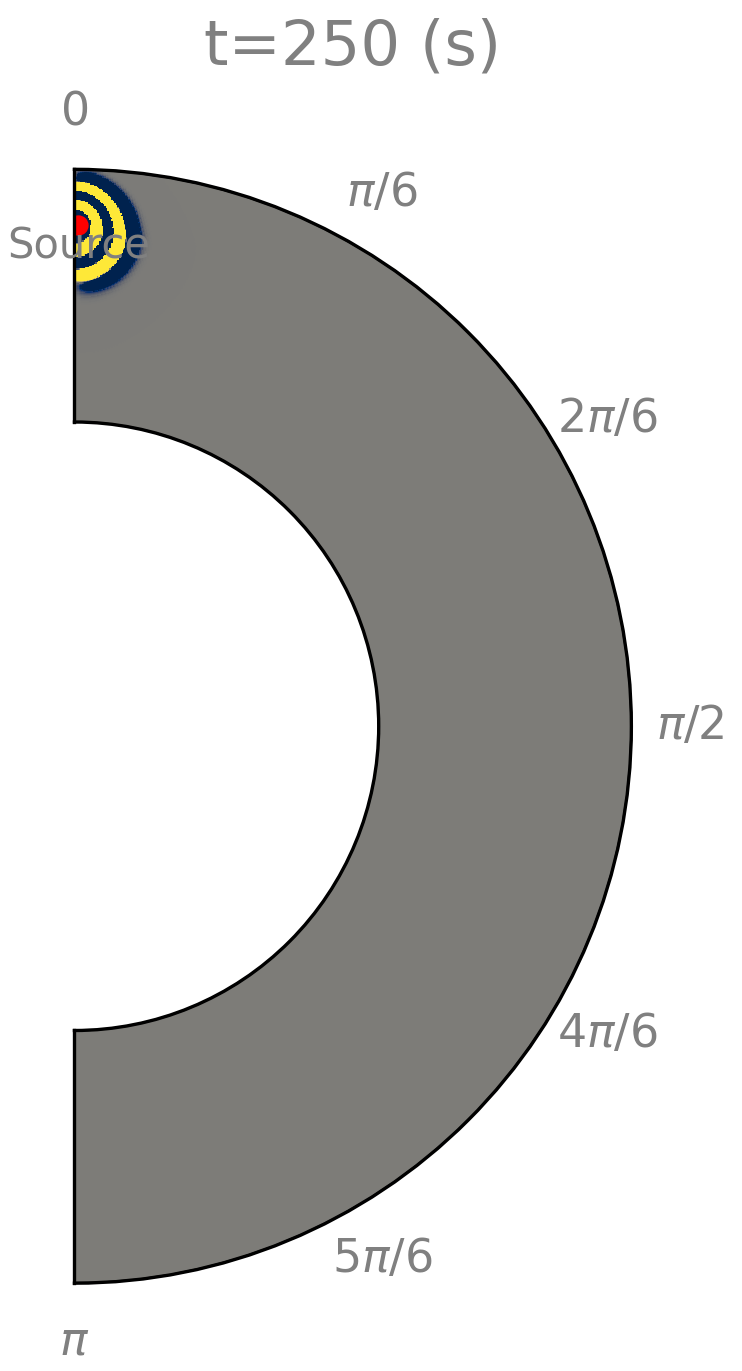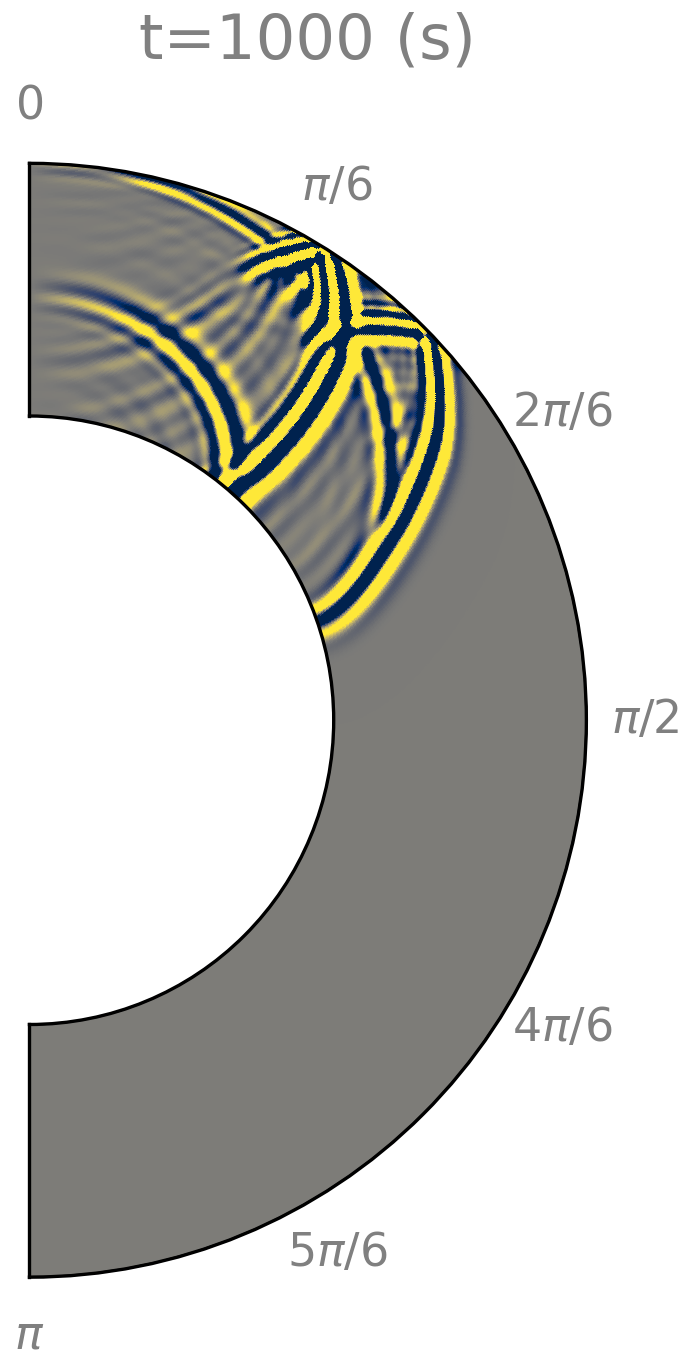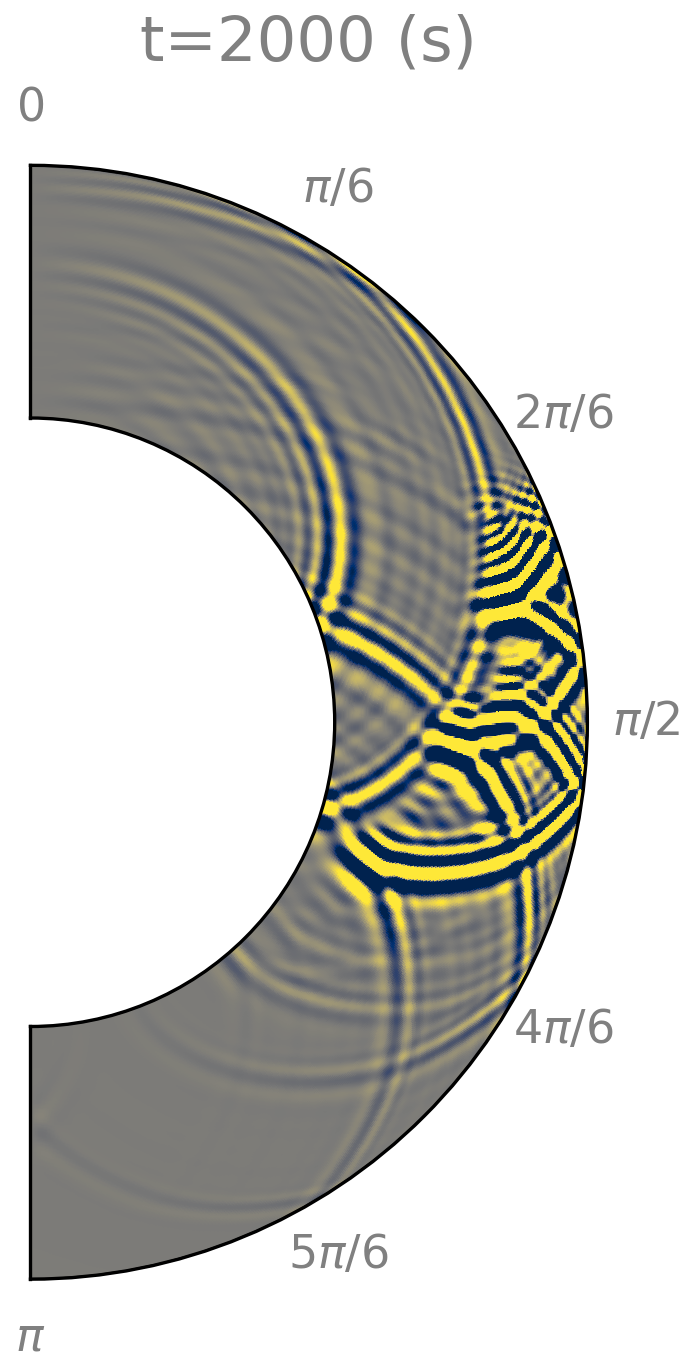Demo 1¶
Description:
Simulates the wave dynamic for a single forcing using the PREM Earth’s model.
1. Prepare¶
export SHAWDIR=<fullpath-to-the-source-code-repository>
export EXEDIR=<fullpath-to-where-you-built-the-code-executables>
# create a dir to run the demo
export MYRUNDIR=${HOME}/myFirstDemo
mkdir -p ${MYRUNDIR}
Important
You need to have the code built to proceed, see Building: “expert” mode or Building: step-by-step.
2. Generate the mesh¶
We use a grid of 200 x 1000 velocity points
along the radial and polar directions, respectively.
To generate the mesh files proceed as follows:
cd ${SHAWDIR}/meshing
python create_single_mesh.py -nr 200 -nth 1000 -working-dir ${MYRUNDIR}
Note that the grid generator script only needs the velocity points because the stress points are defined automatically based on the staggered scheme.
After generating the grid, you should have a ${MYRUNDIR}/mesh200x1000 directory containing:
.
├── [4.5M] coeff_vp.dat
├── [ 28M] graph_sp.dat
├── [ 16M] graph_vp.dat
└── [ 231] mesh_info.dat
3. Input file¶
We use the following input file (learn more about input file):
general:
meshDir: ./mesh200x1000
dt: 0.25
finalTime: 2000.0
checkNumericalDispersion: true
checkCfl: true
io:
snapshotMatrix:
binary: true
velocity:
freq: 100
fileName: snaps_vp
stress:
freq: 100
fileName: snaps_sp
seismogram:
binary: false
freq: 4
receivers:
- 5
- 30
- 80
source:
signal:
kind: ricker
depth: 640.0
period: 65.0
delay: 180.0
material:
kind: prem
which we have ready for you to copy as:
cp ${SHAWDIR}/demos/demo1/input.yaml ${MYRUNDIR}
4. Run the simulation¶
cd ${MYRUNDIR}
# soft link the executable
ln -s ${EXEDIR}/shawExe .
# if you use OpenMP build, remember to set
# OMP_NUM_THREADS=how-many-you-want-use OMP_PLACES=threads OMP_PROC_BIND=spread
./shawExe input.yaml
5. Post-process data¶
The demo should generate inside ${MYRUNDIR} the following:
coords_sp.txt #: coordinates of the velocity grid points
coords_vp.txt #: coordinates of the stresses grid points
seismogram_0 #: seismogram at the receiver locations set in input.yaml
snaps_vp_0 #: snapshot matrix for the velocity
snaps_sp_0 #: snapshot matrix for the stresses
We created Python scripts for this:
cp ${SHAWDIR}/demos/demo1/*.py ${MYRUNDIR}
First, the seismogram data:
cd ${MYRUNDIR}
python plotSeismogram.py

Then, contour plots of the velocity field at t=250, 1000, 2000 (seconds):
cd ${MYRUNDIR}
ln -s ${EXEDIR}/extractStateFromSnaps .
# extract from the velocity snapshots the velocity field at specific timesteps:
# since we use ``dt = 0.25`` seconds, our tartgets ``t=250, 1000, 2000``,
# correspond to *time steps* 1000, 4000, 8000
./extractStateFromSnaps --snaps=./snaps_vp_0 binary --fsize=1 \
--outformat=ascii --timesteps=1000 4000 8000 \
--samplingfreq=100 --outfileappend=vp
python plotWavefield.py


